The Art of Seeing Small
Tips, techniques, and inspiration to help you create close-up garden photos that glow with life.
The garden was amazing this morning. It’s been a few years since nature in Omaha has looked this good at this time of the year, and I’m in love with these photographs.
I thought I’d share my settings, thought process, and more if you’re interested in how I do this stuff!
1. Be There.
I haven’t gotten to the garden much lately because I assumed there wasn’t much beauty there. At this time last year, it was fairly grim.
Being there is almost all of it, isn’t it? That’s the lesson for this photo:
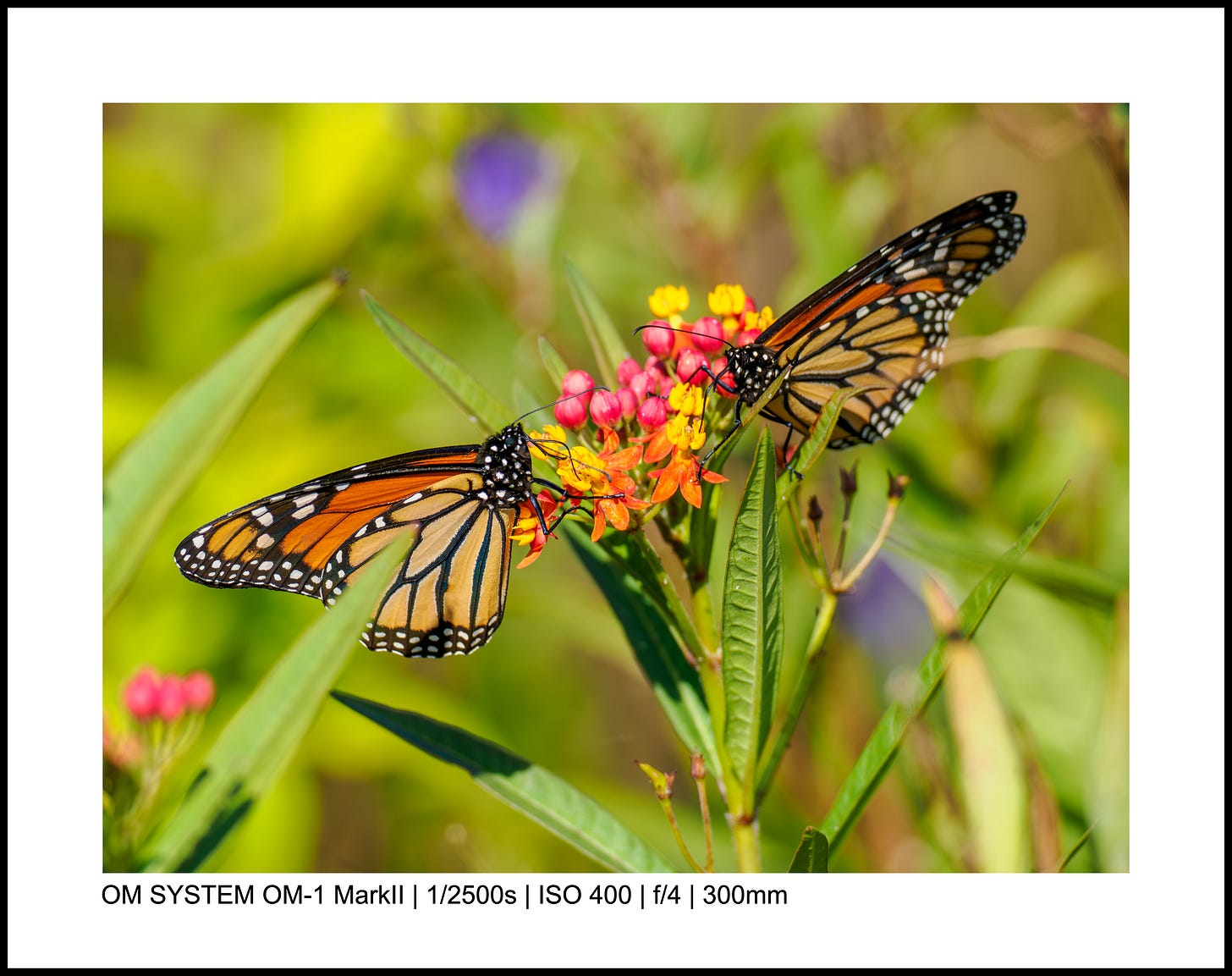
I’ve taken thousands of butterfly photos, but it’s not super common to get two on the same flower. Even better: these two monarchs seem almost mirrors of each other, and the colors just sing.
I wouldn’t have been able to get this shot unless I went out this morning.
I was there, at the very least.
The Right Side of the Light
The following shots are using backlighting, which just means the sun is to the subject’s back. For the garden, that’s sometimes awesome. Light fills the translucent colors of the garden (petals and wings) and creates a glowing effect I love:
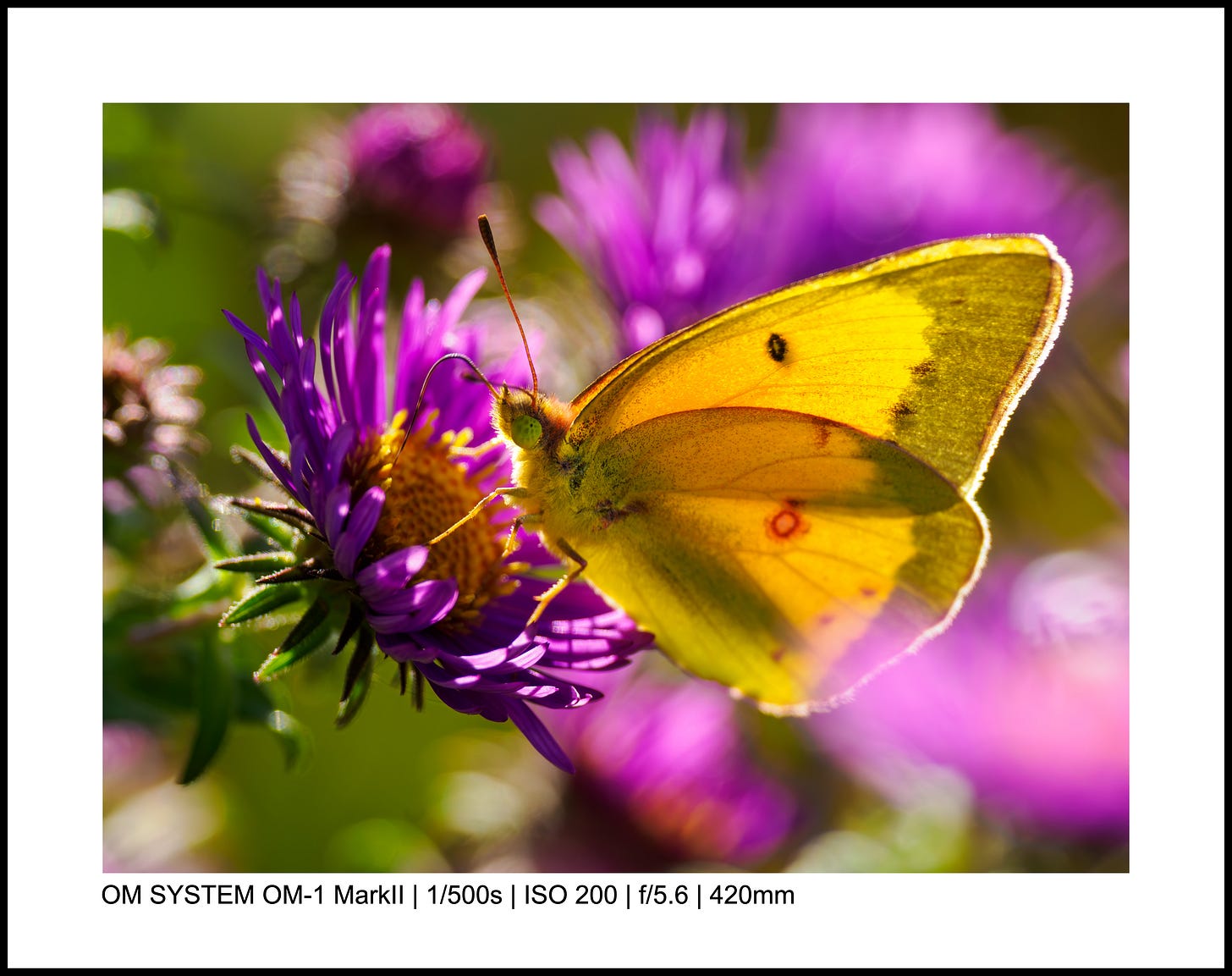
The next two photos are with direct sun on the front side of the subject for a totally different feel:
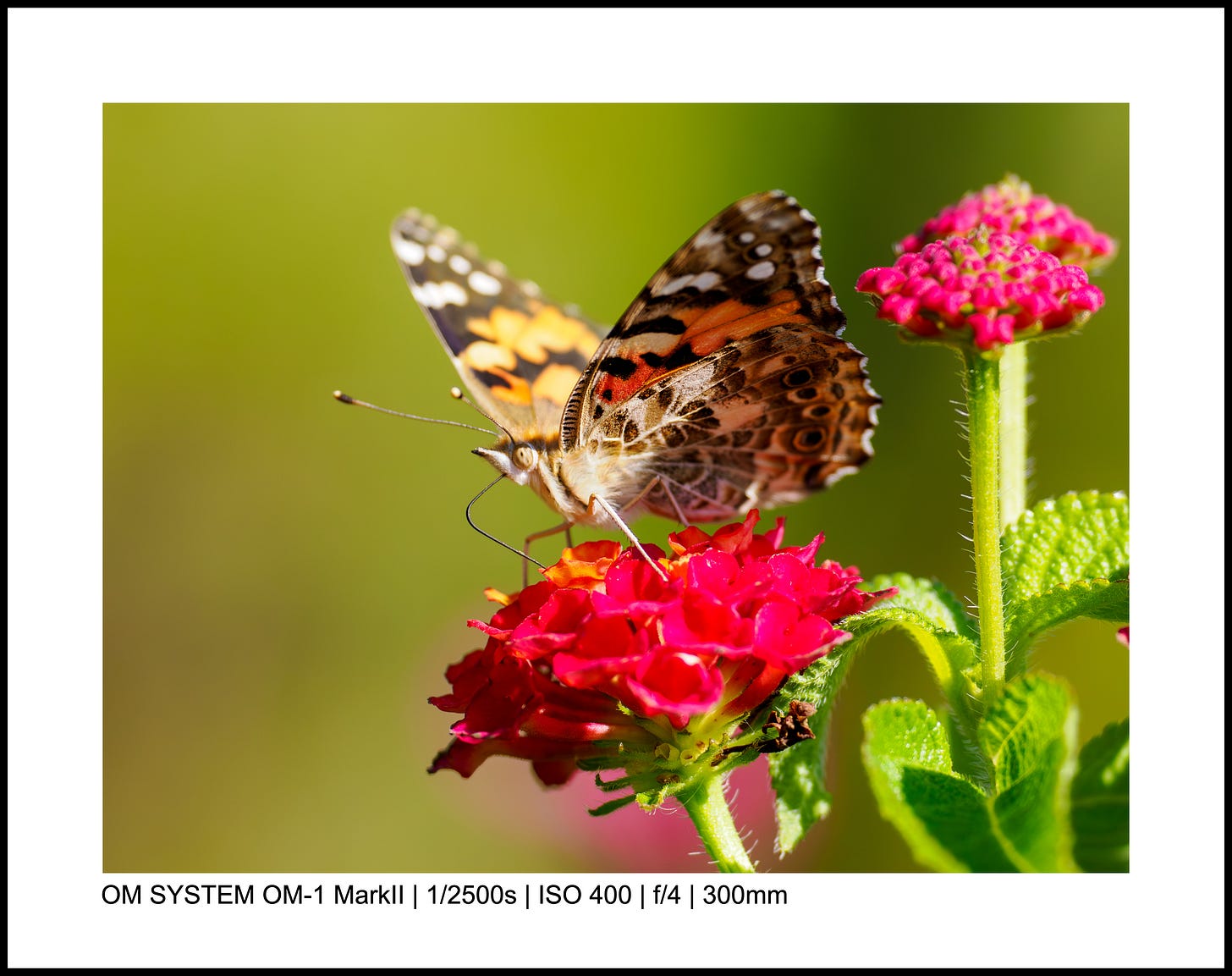
A Macro Isn’t Always the Best Choice
I brought two lenses to the garden with me today: the OM SYSTEM 90mm f/3.5 PRO and 300 f/4 PRO (mostly with the 1.4 teleconverter). I used these along with the OM-SYSTEM OM-1 Mark II (the camera and system I recommend for nature photography.)
I used the macro less today, and instead used the 300 with the 1.4 teleconverter a lot more. This combo is equivalent to an 840mm lens in full frame terms, which is fantastic for butterflies, moths, and other creatures in the garden, since you can get really close without actually being really close.
The double-nature of the 300 f/4 PRO (the ability to get distant subjects AND do close-ups in the garden) allows for these kind of hummingbird shots easily:
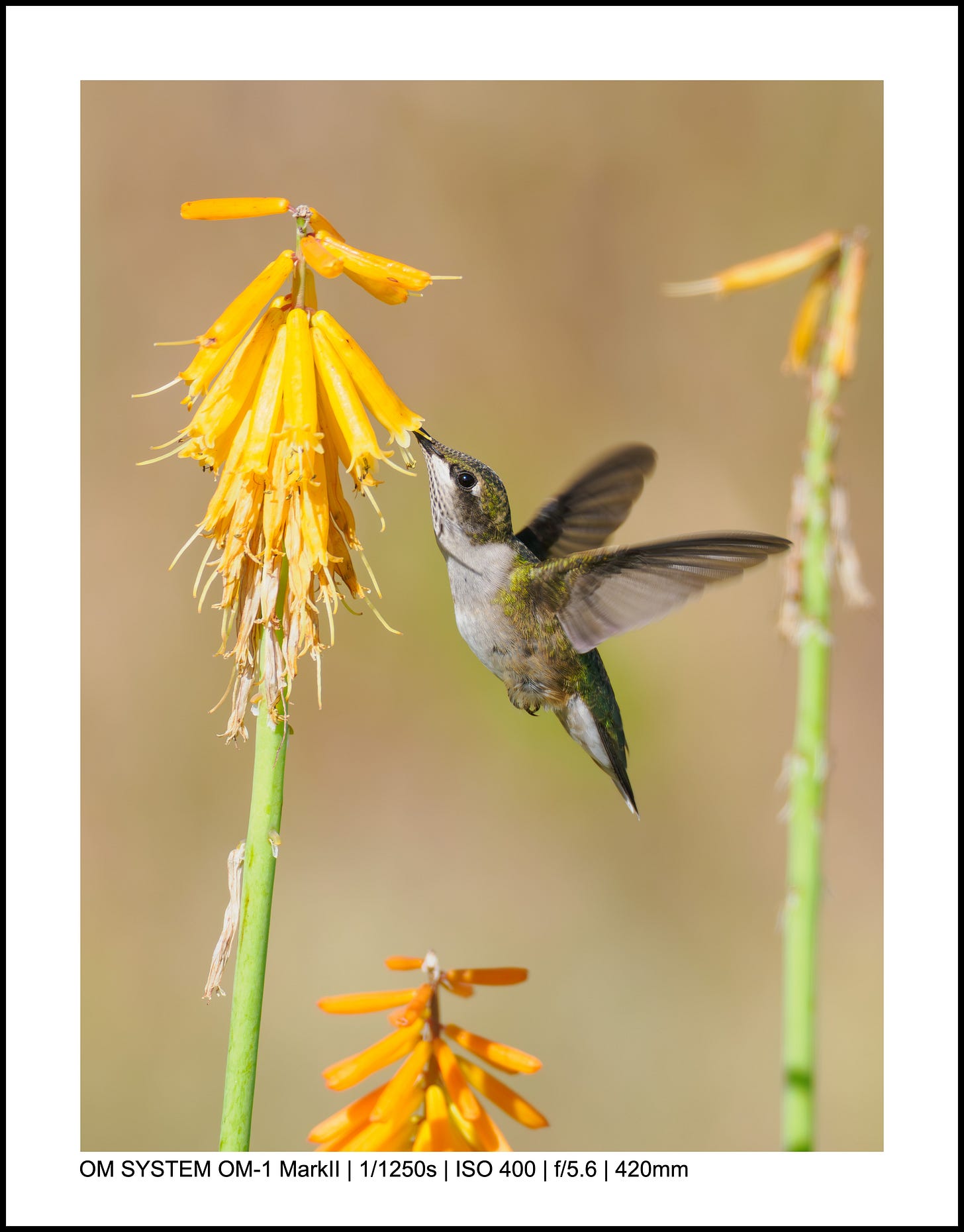
Macro Lenses are Still Awesome
These shots are using the 90mm Macro now, and you can see there is definitely a reason to bring a macro to the garden!
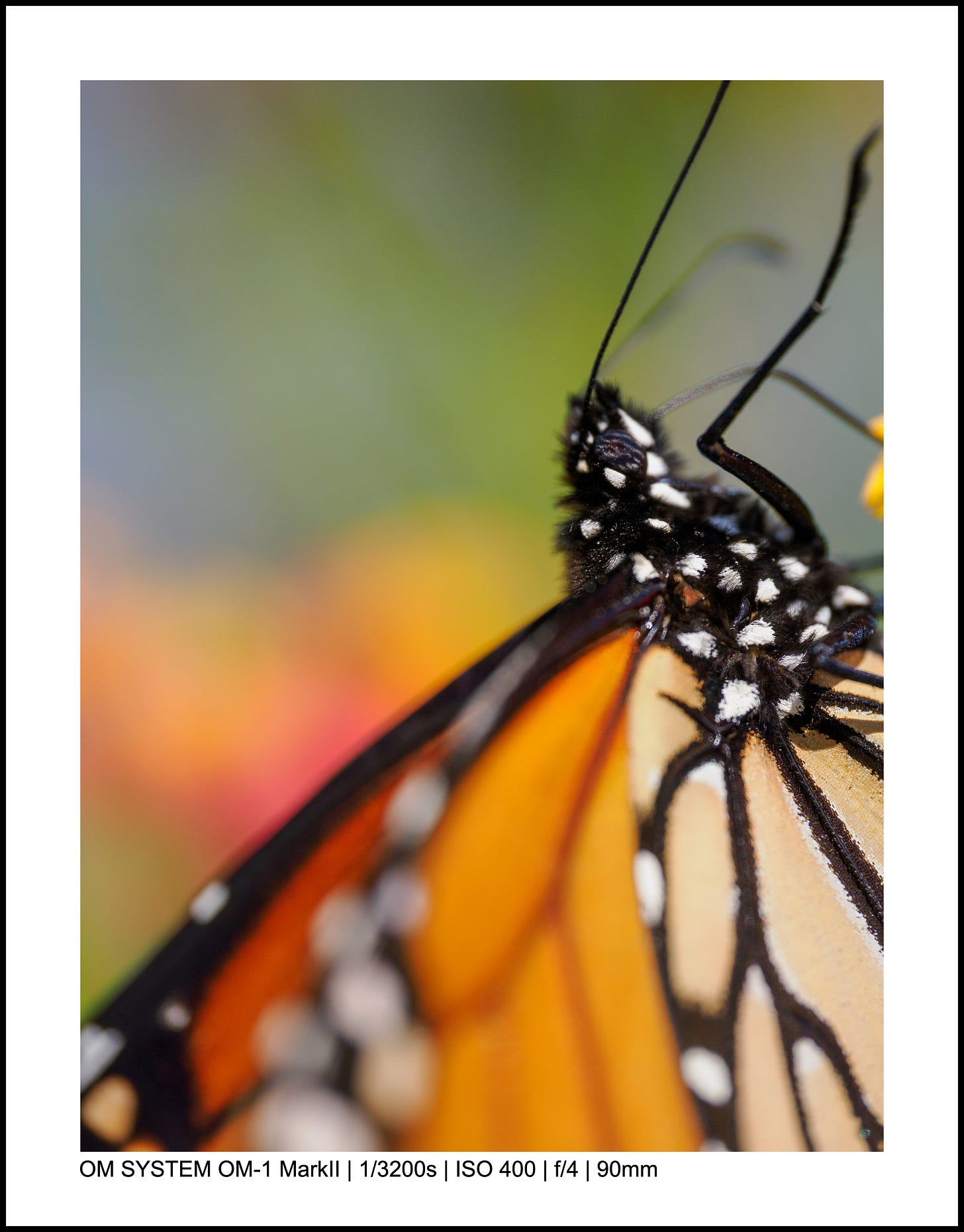
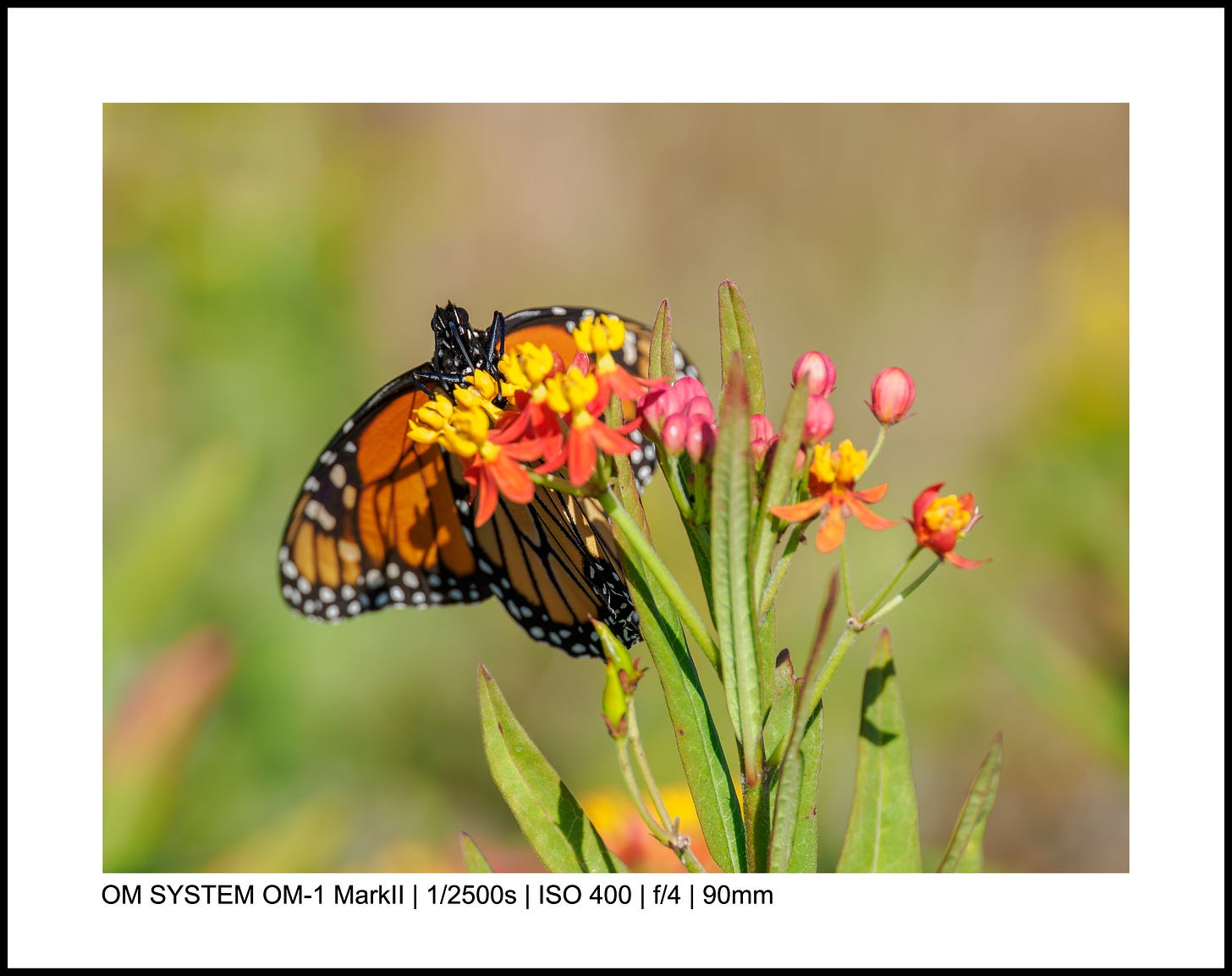
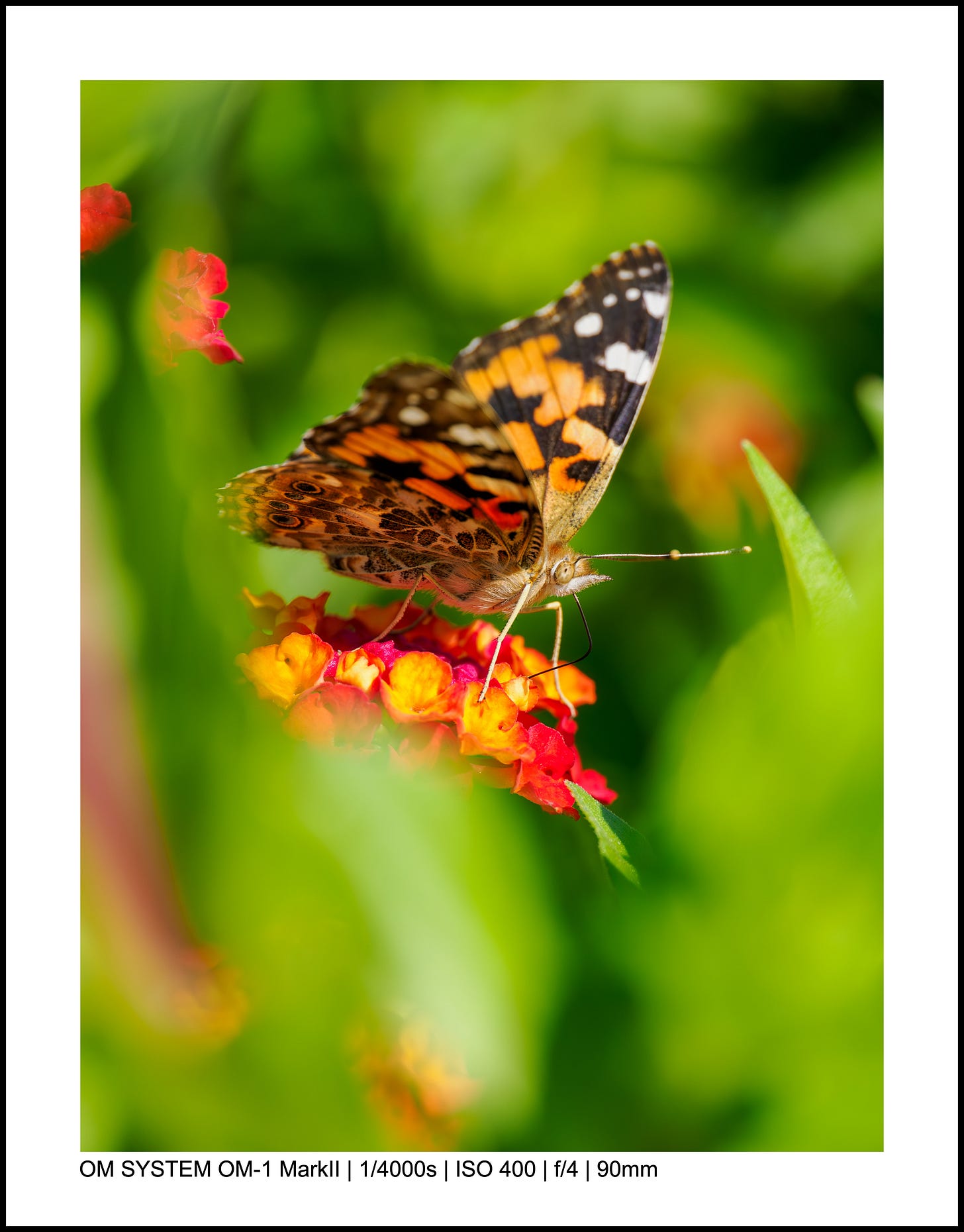
Get Down Low!
For the next three photos, I was laying on the ground, pointing the camera upwards. Getting low is a fun way to create unique imagery - most people don’t see flowers from the ground level, and it can be very cool.
For the above photo, my OM-1 Mark II was on the ground, and I used the LCD screen to point the camera up toward the mantis.
Shoot Through Stuff
I purposely photographed this praying mantis by positioning myself so flowers were in my way, allowing them to appear blurred for the final photos. (This is sometimes called “framing.”)
Harsh Light Can Be Fine!
Harsh light is tough, but the next few photos shows a few ways it can help. Direct light can be hard to deal with, but brings out the detail and vibrancy in the garden:
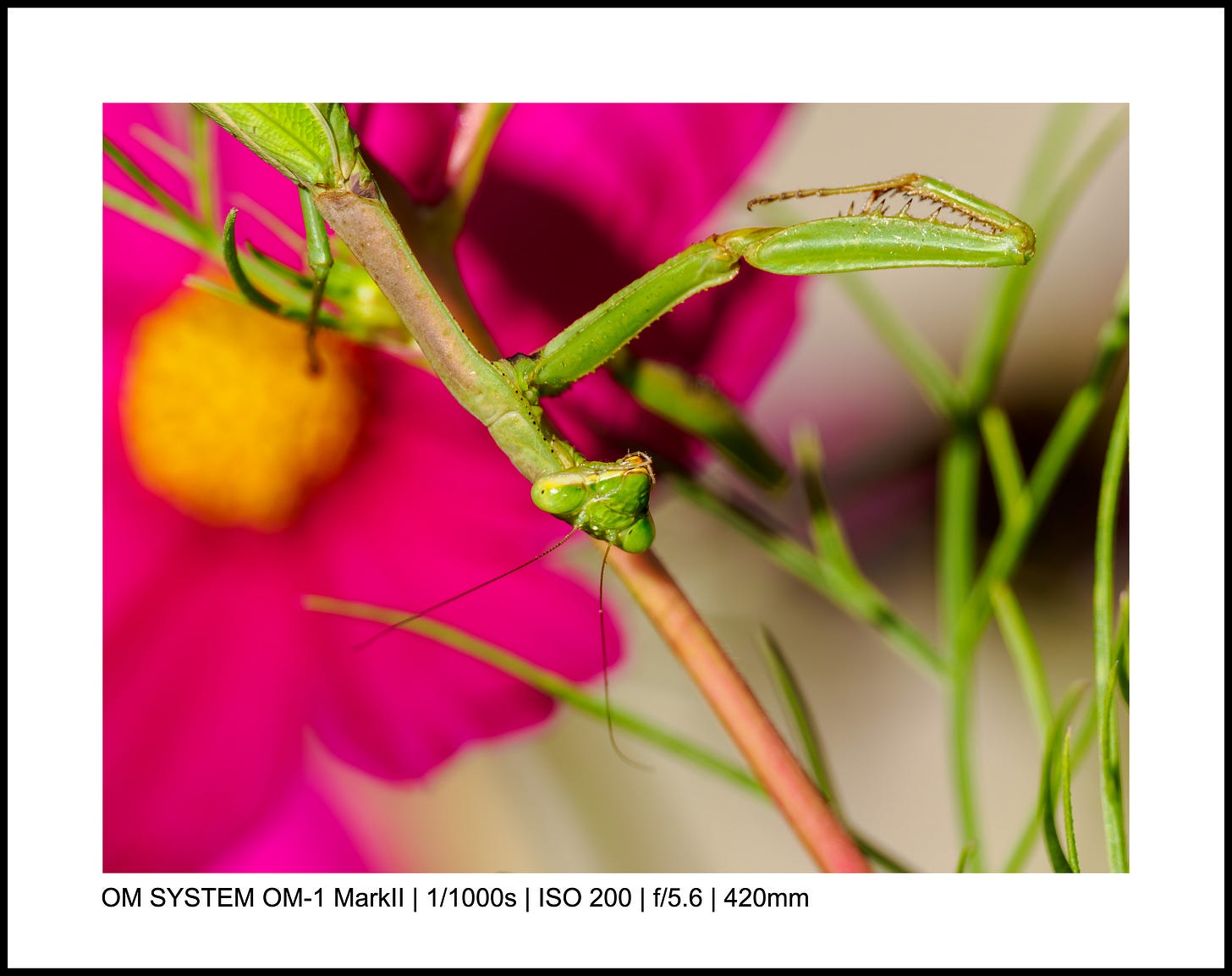

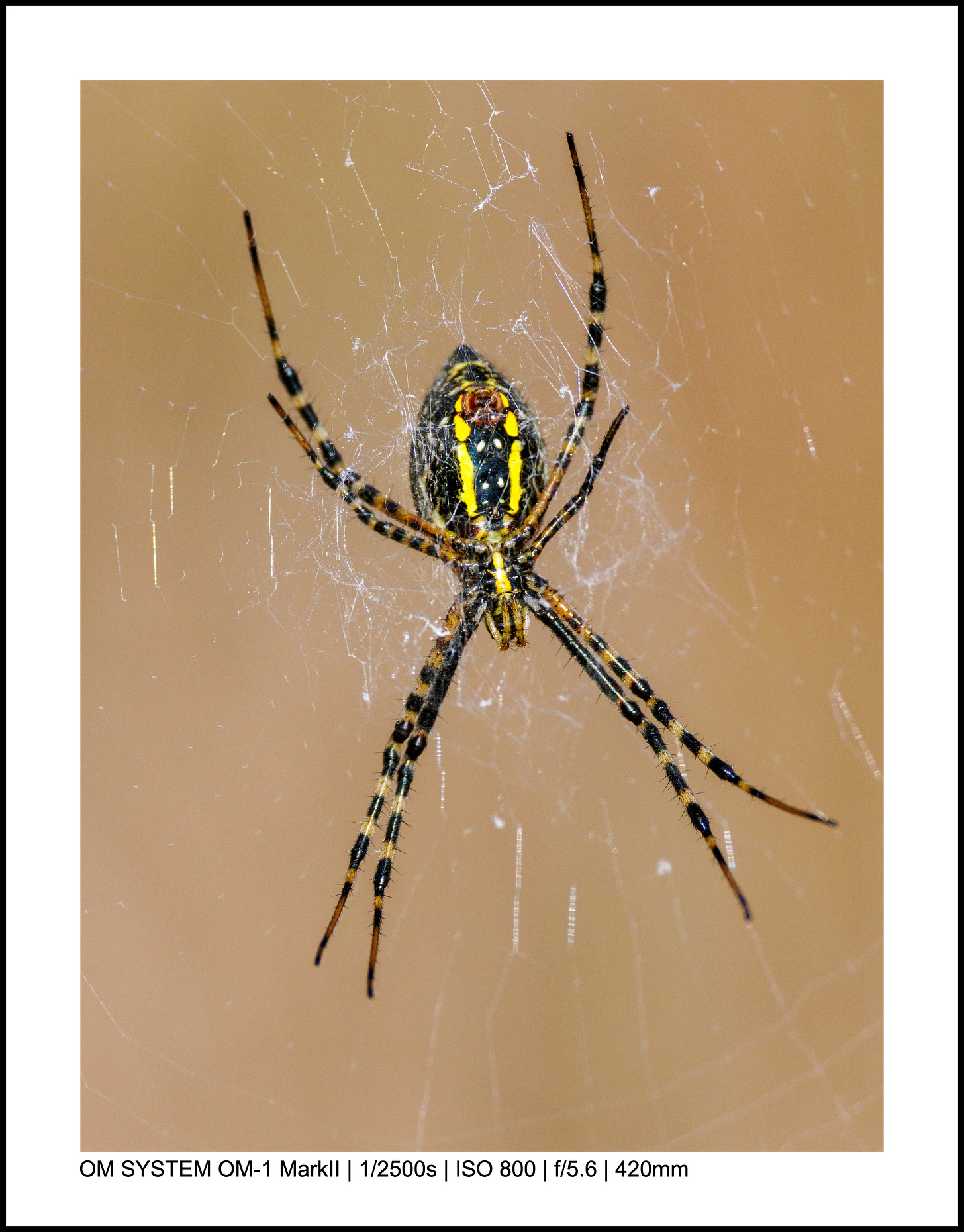
The following isn’t a creature, but an example of the brilliance of full, direct sun:
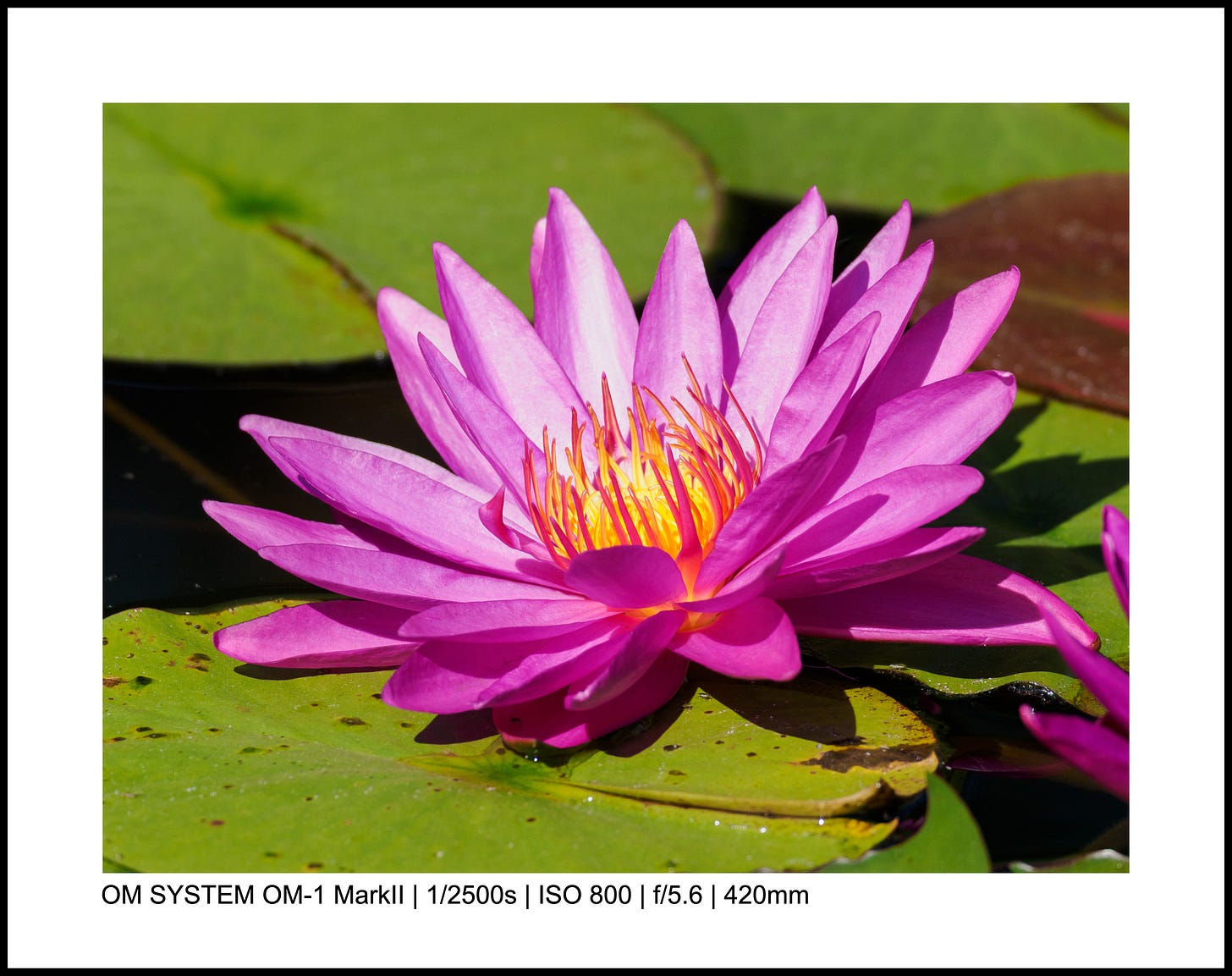
Be There (AGAIN)
I’m listing the concept of “being there” twice because it’s the most important part. It’s not just about the photos, it’s about the experience.
My wife walked with me this morning, and we both marveled over this mysterious find:
Turns out, it’s not mysterious at all, but a Monarch Butterfly chrysalis. We looked it up, and at this point, the adult butterfly will emerge within a day.
That’s… just amazing. I need to be more grateful of how photography gets me out in nature to experience all the wonder around me.
After our walk, we talked about how good it feels to have moved and experienced nature early in the morning. And it really did feel great. The memory of the garden is with me now, and it’s awesome.
The world is full of chaos, and being in the garden - BEING there - is everything. It not only helps you get better photos (being there is most of photography), but it might help you forget about the news for a little bit. THAT is worth everything!
Don’t Overthink Things
For each photograph I take, I think about two things:
My camera settings - trying mostly to not overexpose, but also to squeeze every photon of light I can onto my sensor.
The viewer and how they will engage with my photo.
Settings are self-explanatory, but when I think of the viewer, I’m thinking of bringing a stranger into my photograph - or my “world.”
I have to guide them to what I find beautiful, or mysterious, or wonderful, or whatever… I just need their eyes to go somewhere “good.”
I was a high school photography teacher for almost two decades, and we always talked about how cool it was, as an artist, to be able to control where a viewer “looks” within the photograph.
And it’s true. I try to do this with EVERY photo I take. Honestly, I’m not great at this - I often find myself impatient in the garden. There is so much light and color, and I need to move to get more and more.
The entire gallery of photos on this post are (hopefully) a good example of how I try to guide my viewer somewhere in the photo. Let me know if you think I was successful!
Equipment?
I’m using small and light OM SYSTEM cameras and lenses.
I can hold the gear for longer periods at a time without discomfort, and OM SYSTEM cameras and lenses are smaller and more versatile (most lenses for the system, for instance, also have incredible close-focus ability) than the others.
For these types of nature photos, I find that the small(ish) sensor of the OM SYSTEM cameras is actually a huge benefit. Using an f/4 lens (like I was using today) will actually give us f/8 in terms of depth of field.
That’s useful when we want to get more in focus, and for me, that’s definitely part of the plan when I’m taking nature photos.
What about flash and diffusers for macro?
I’ll probably use a flash and diffuser someday for macro, but right now I just want my close-up photography to be simple. I use available light and have little experience with using modifiers in nature photography.
What questions do YOU have?
Throw the questions in the comments and let me know. I’d love to help!
LET’S SEE A CAT PHOTO ESSAY
I did a LOT of photography today. After my nature walk with my wife, I used my iPhone to capture our cat Oreo doing this amazing thing:
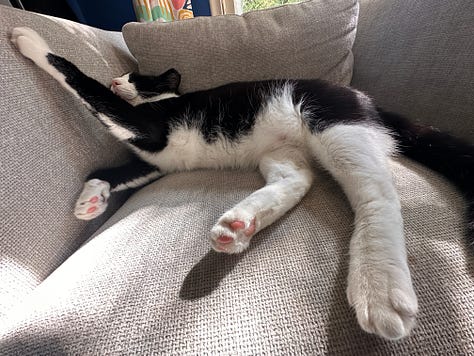
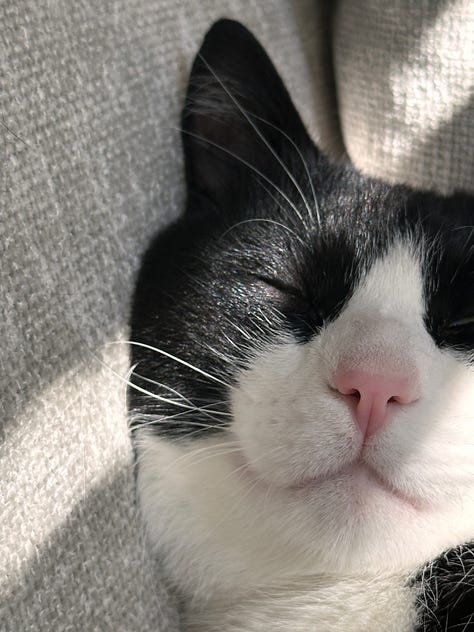
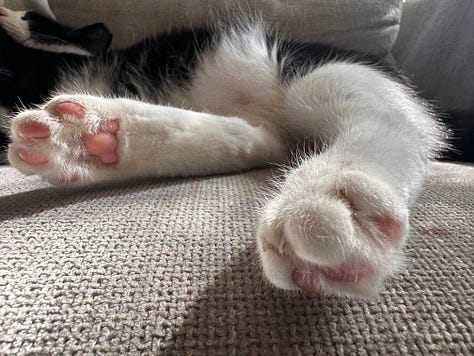
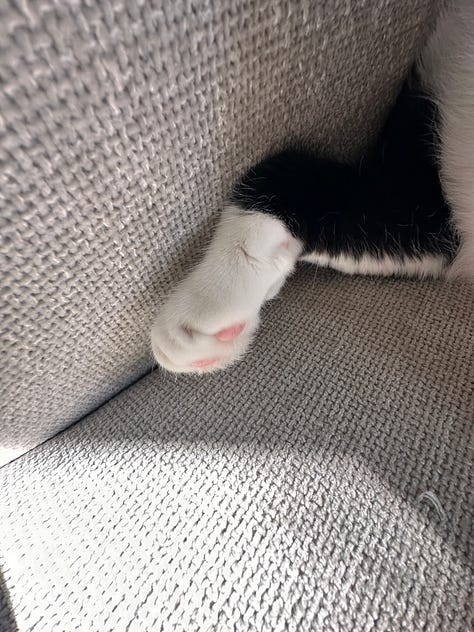
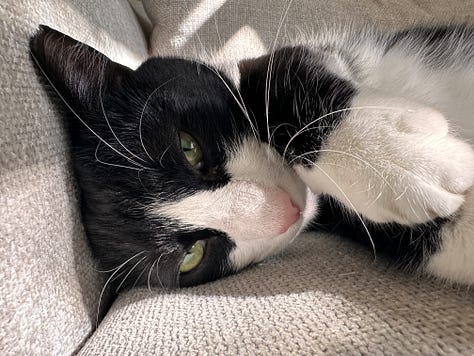
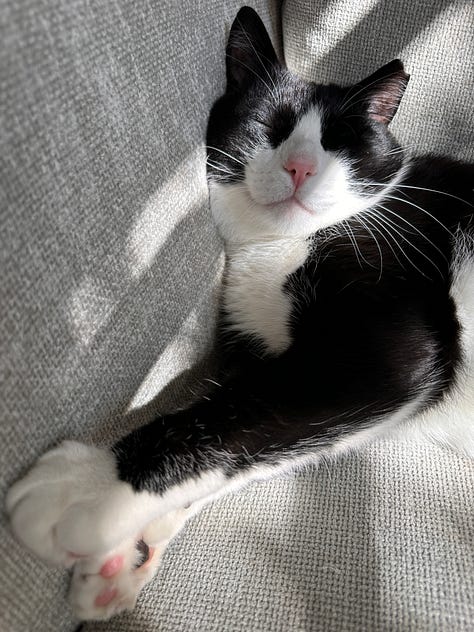

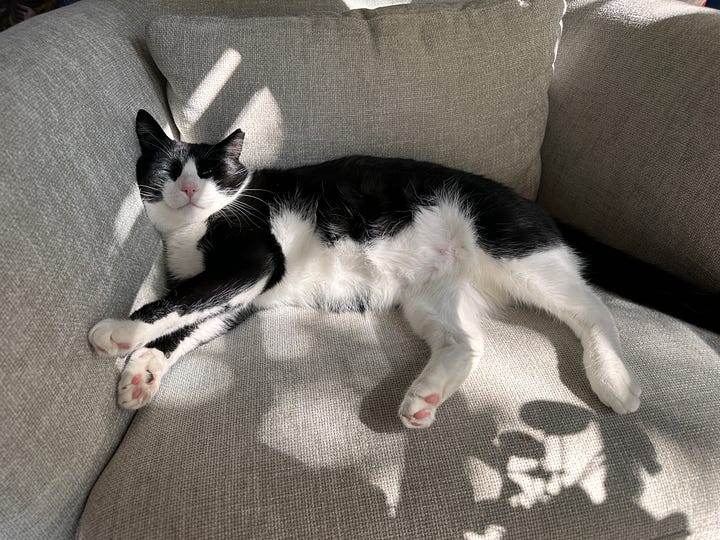
THANK YOU FOR BEING HERE!
I can’t thank you enough. Over the years I’ve had so much support, and I’m honored you consider my writing and photography worth your time.
If you want to support me further, you could subscribe to this blog with a subscription, or you could buy a print from me here:


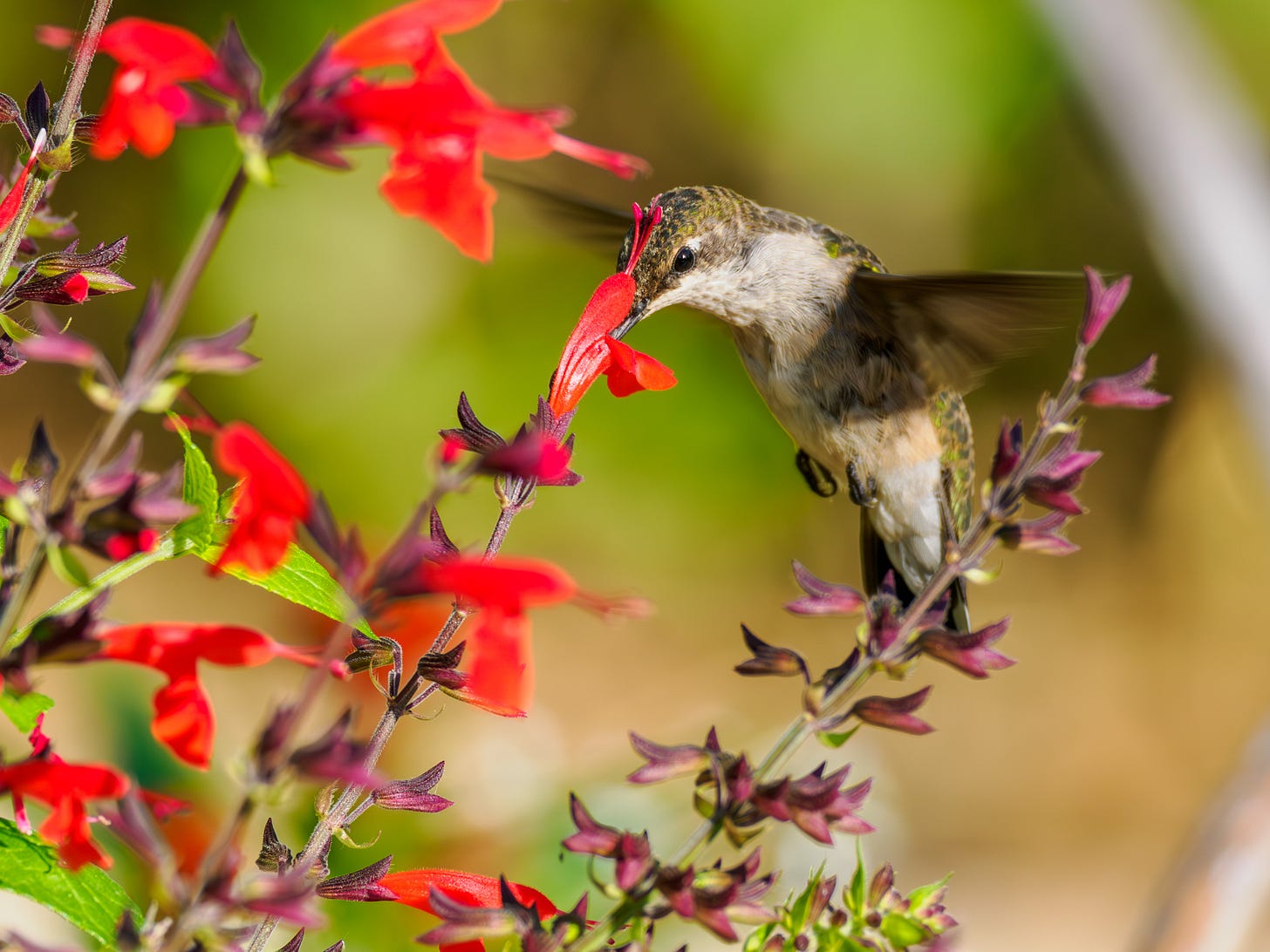
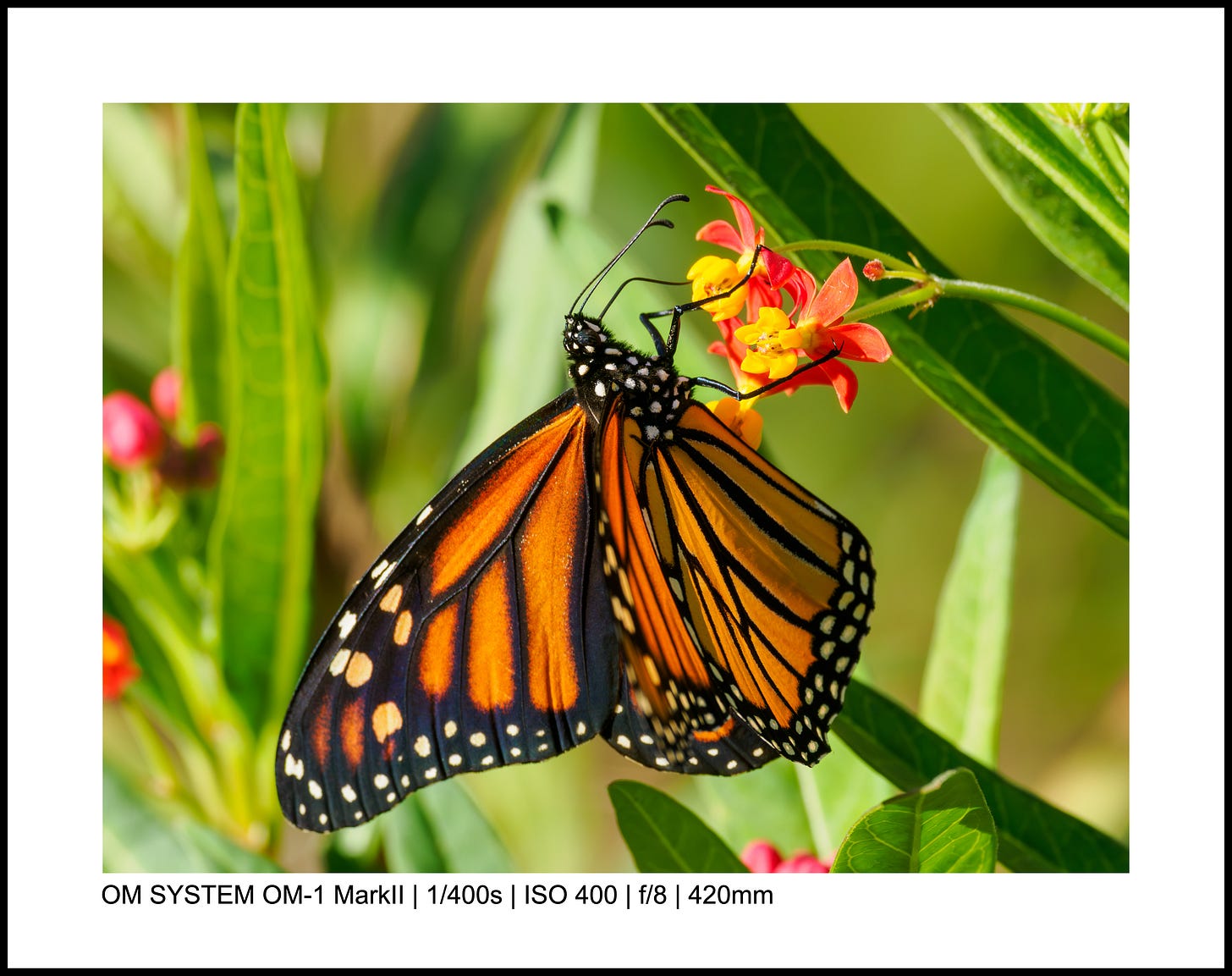
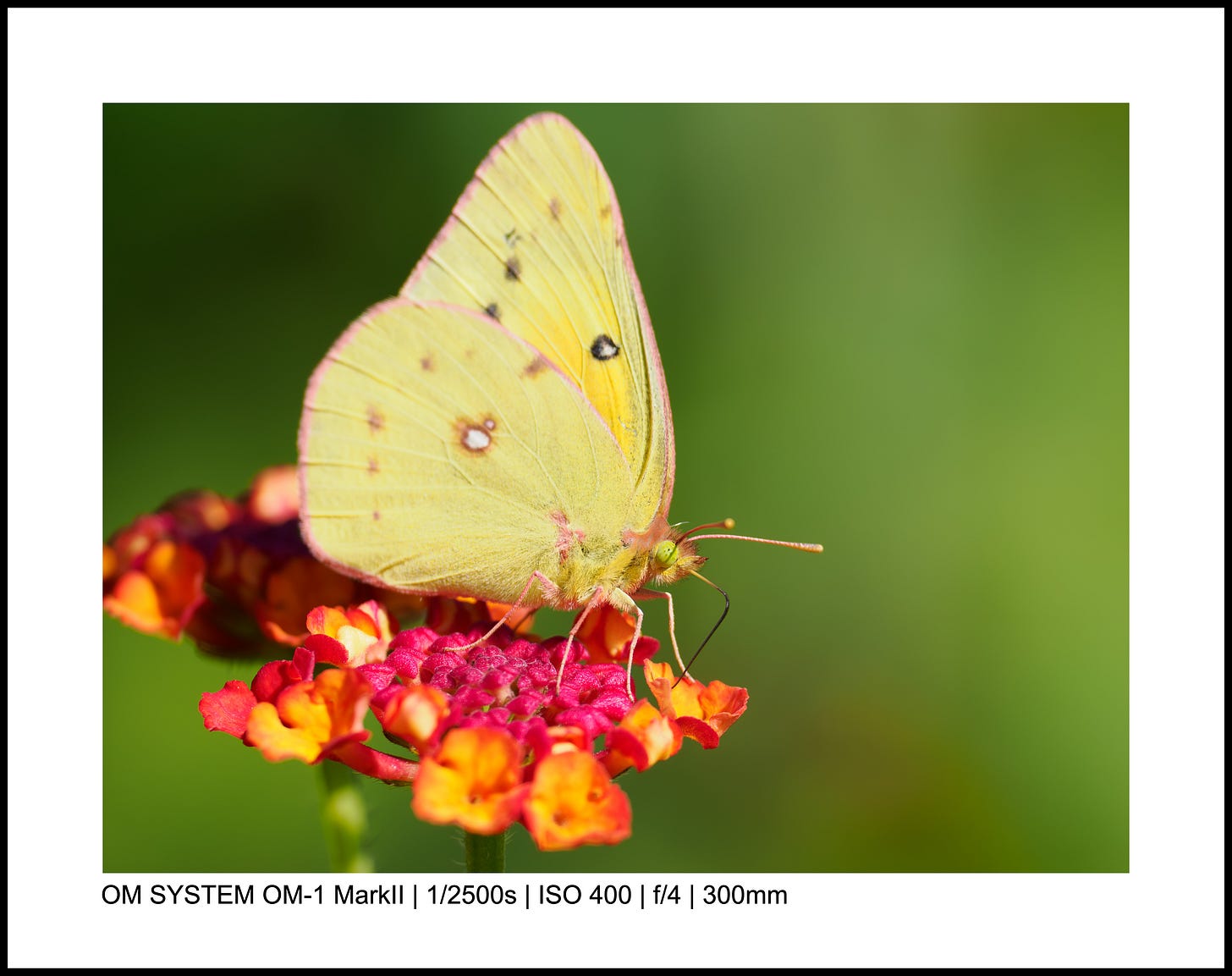
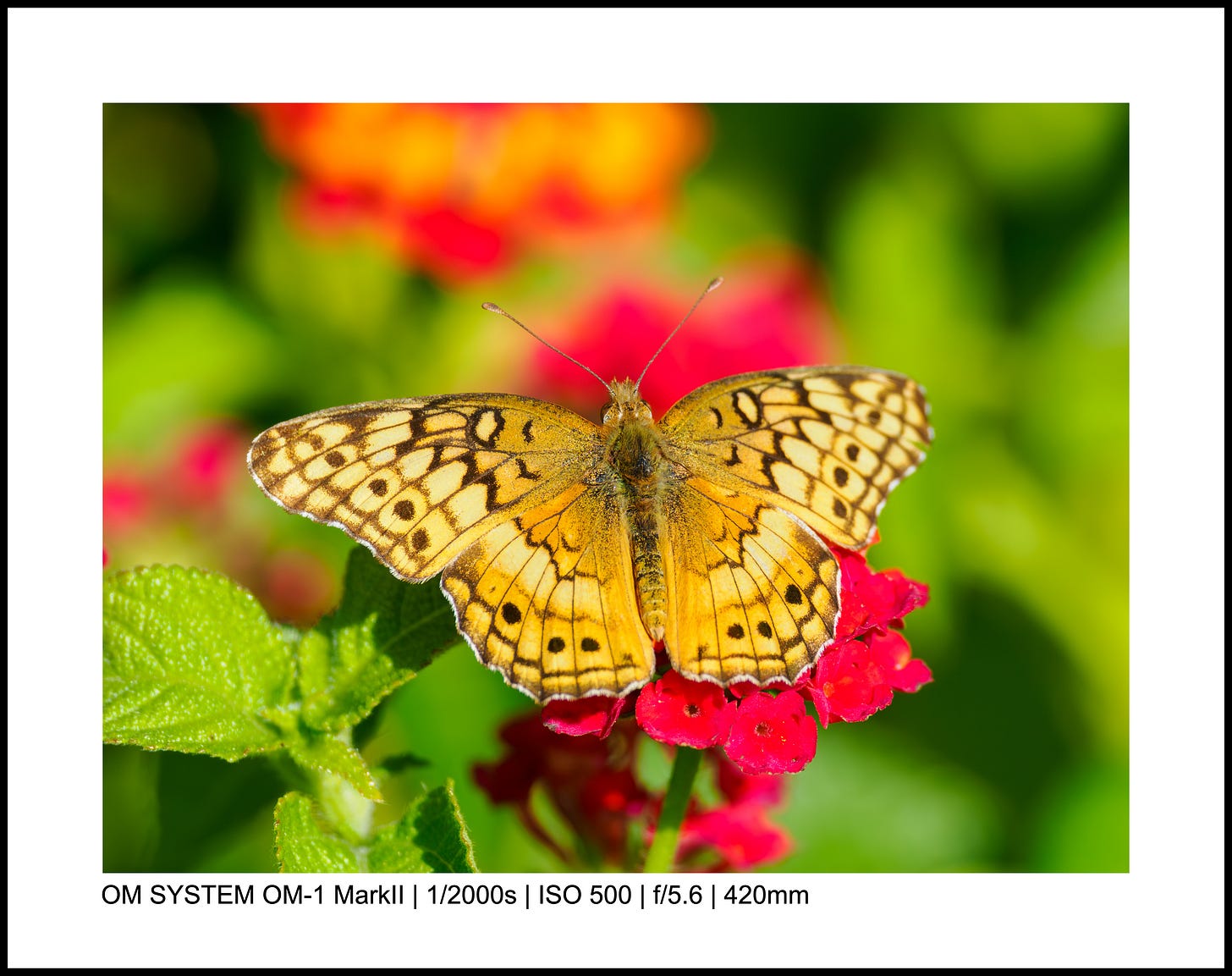
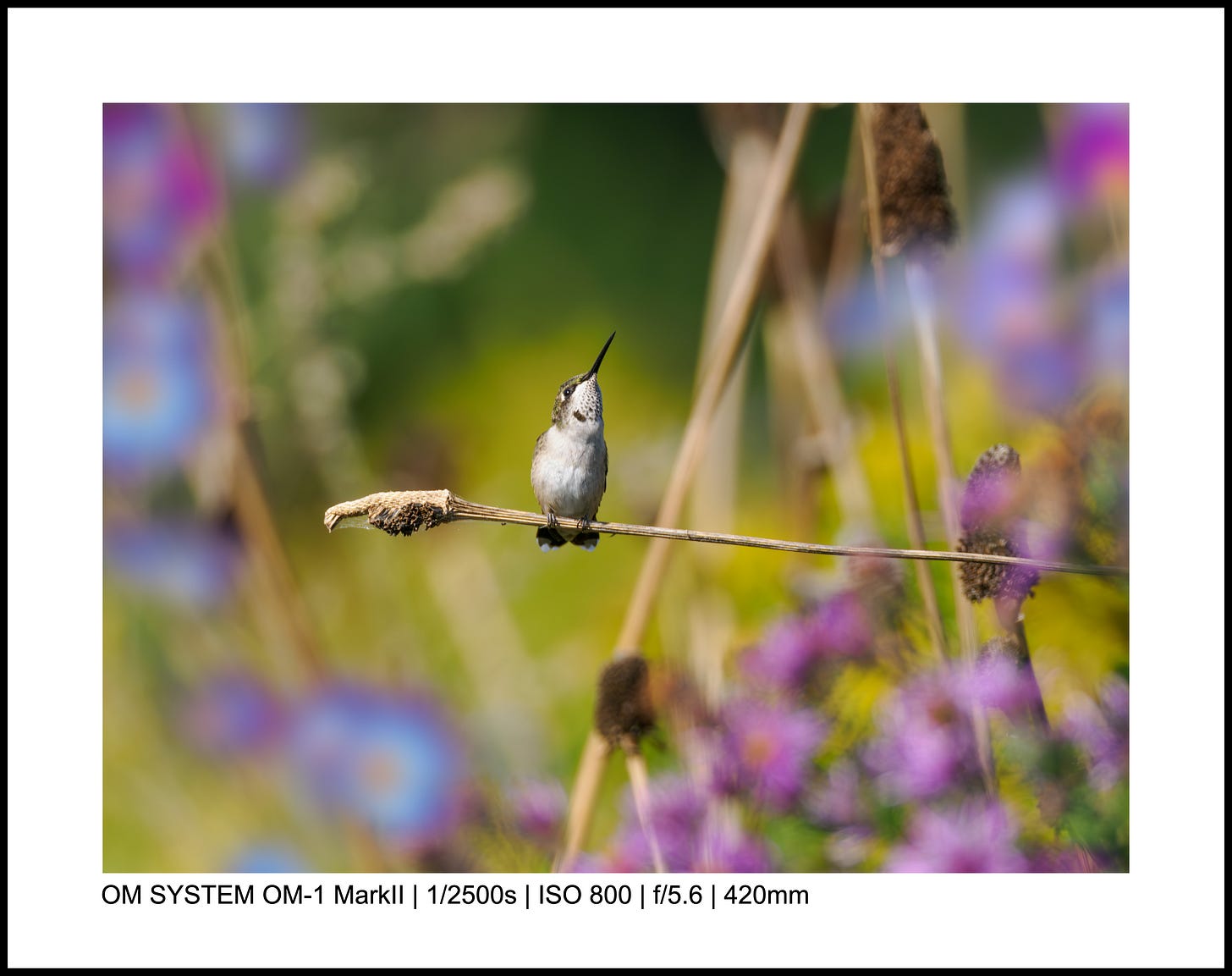
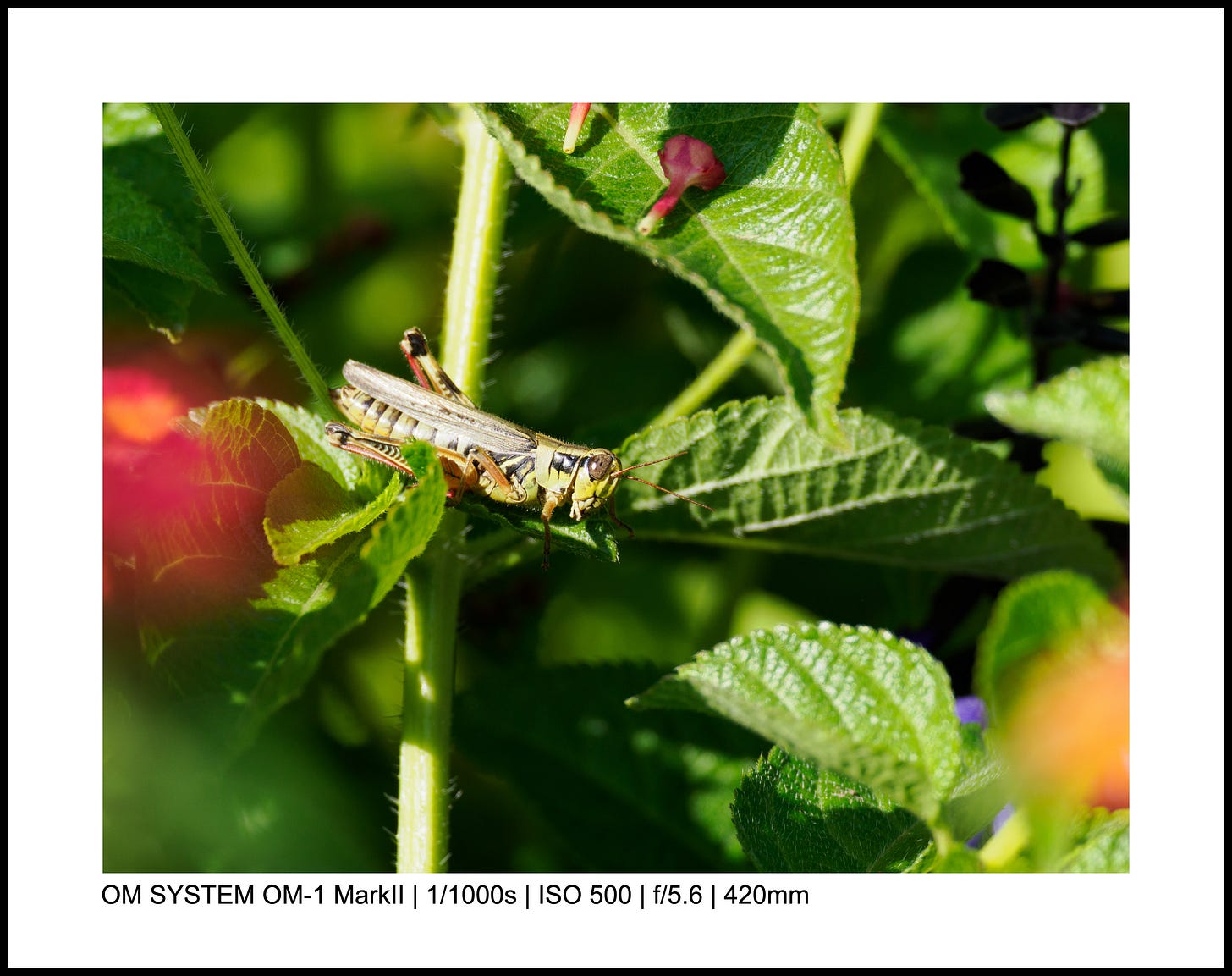
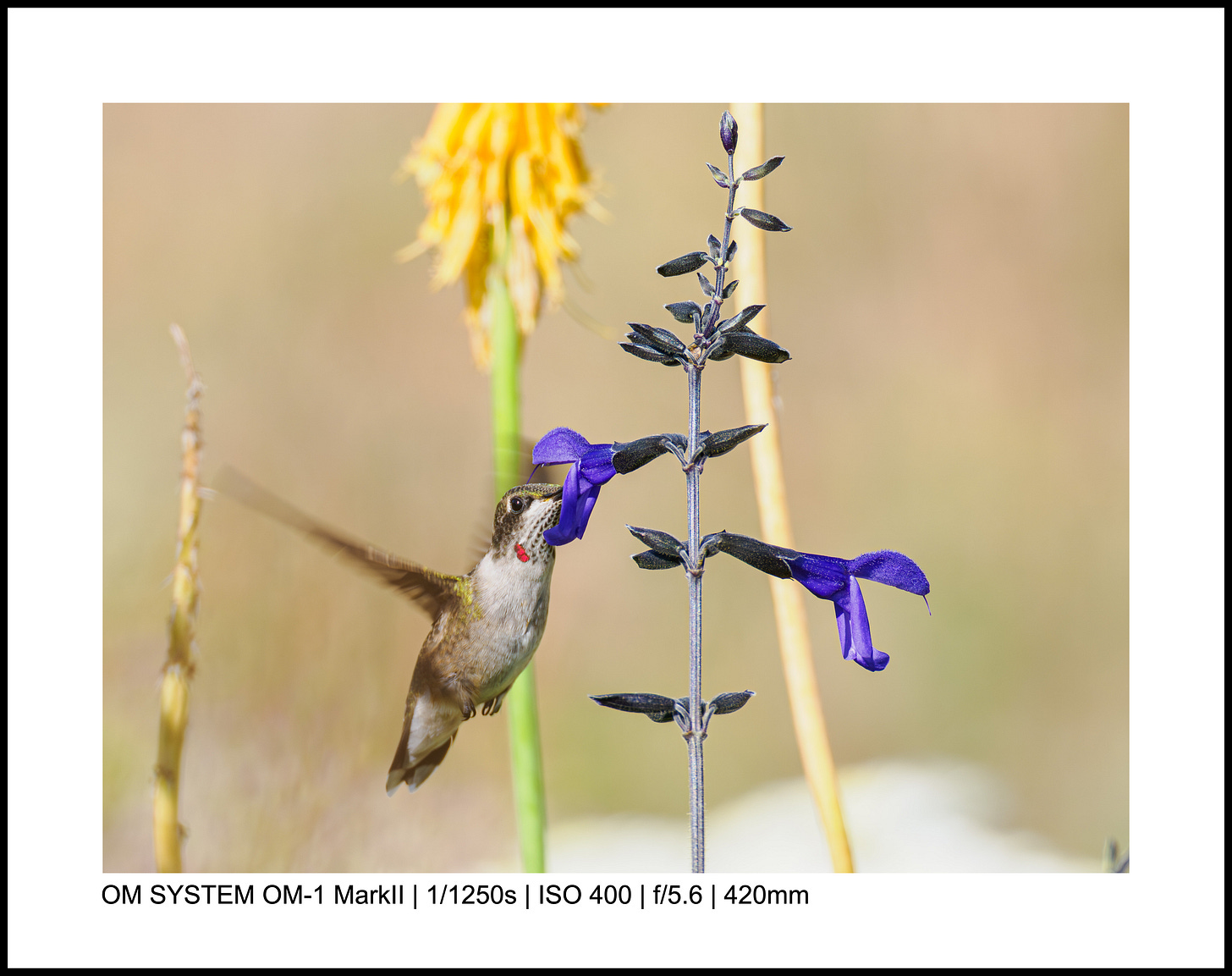
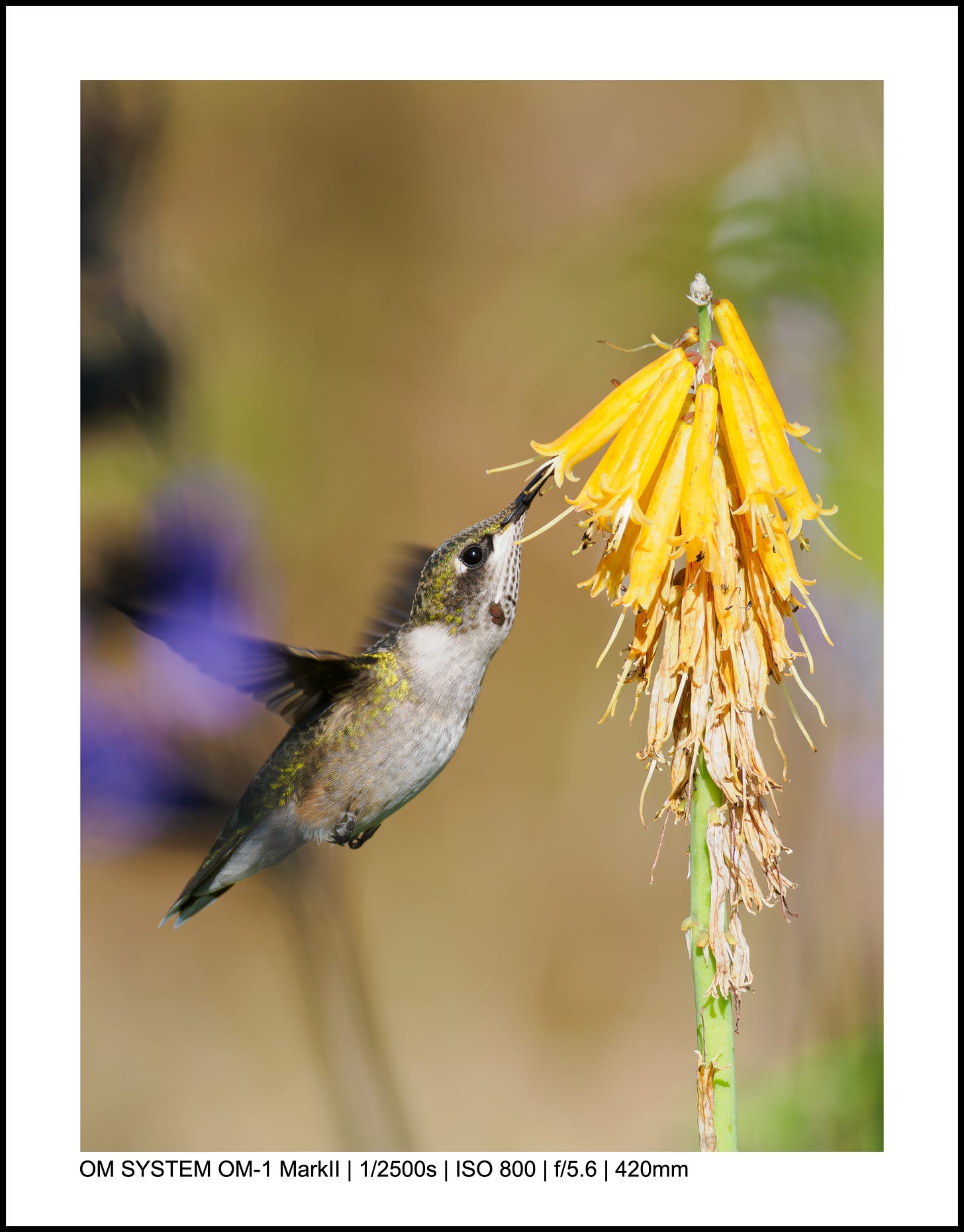
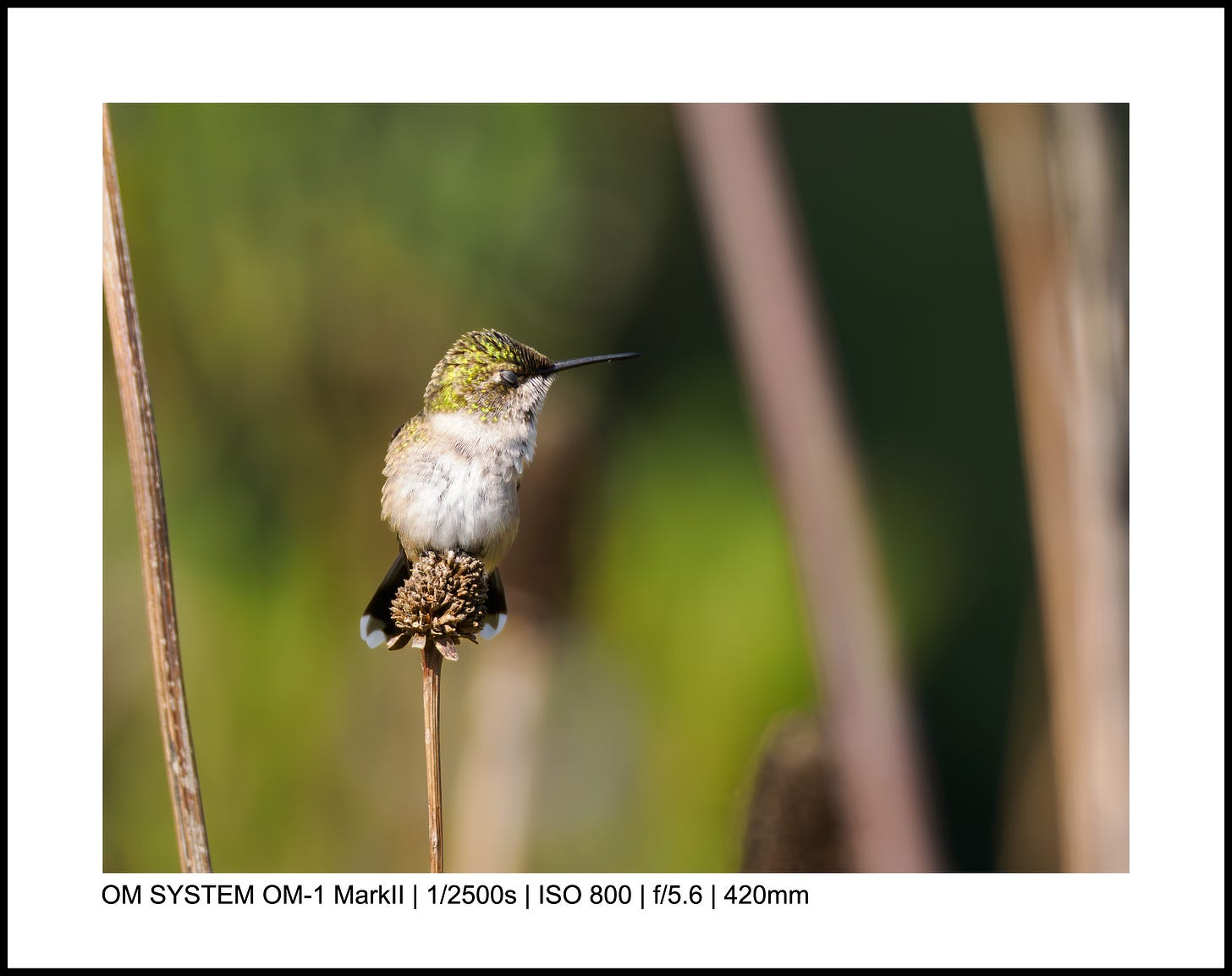
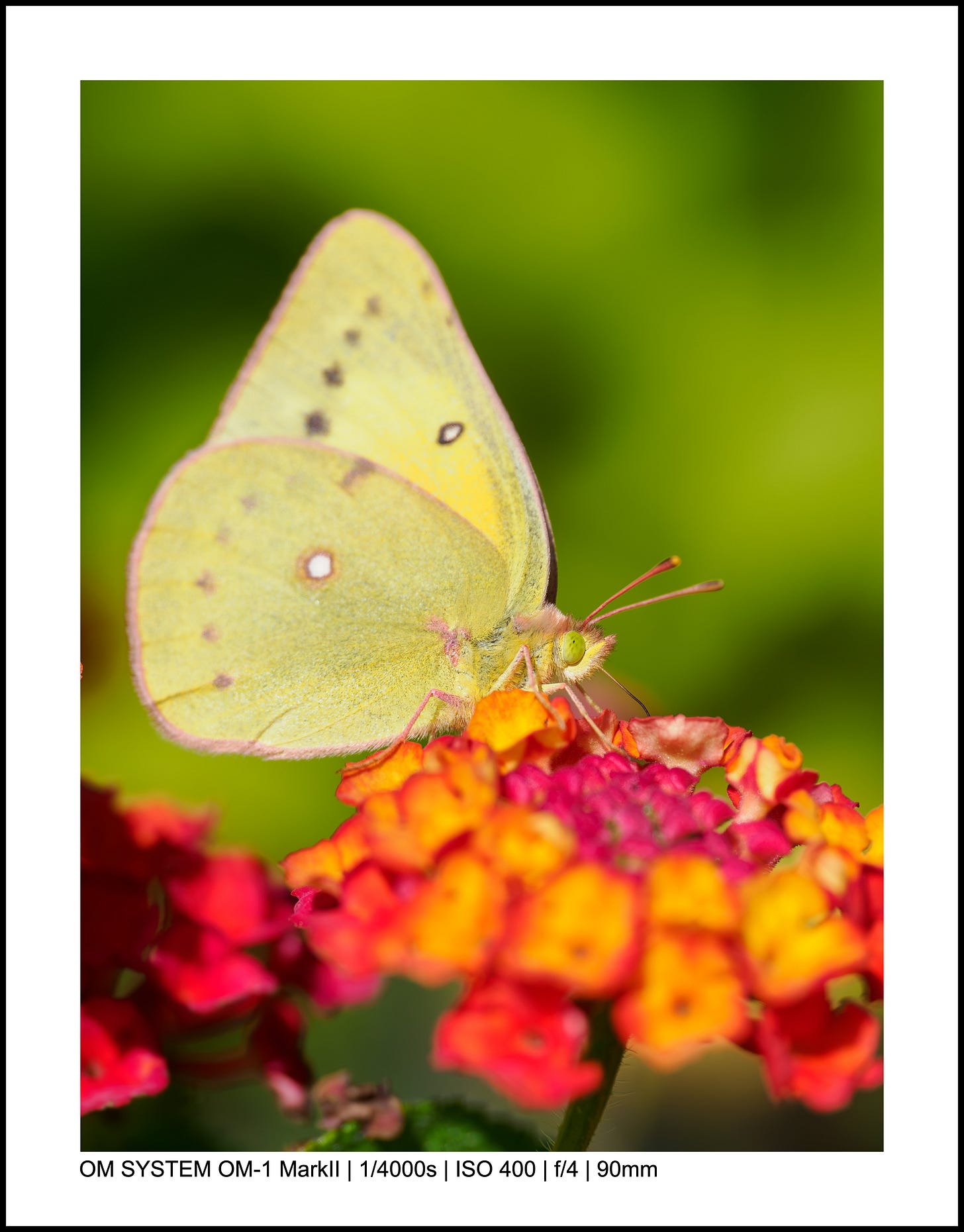
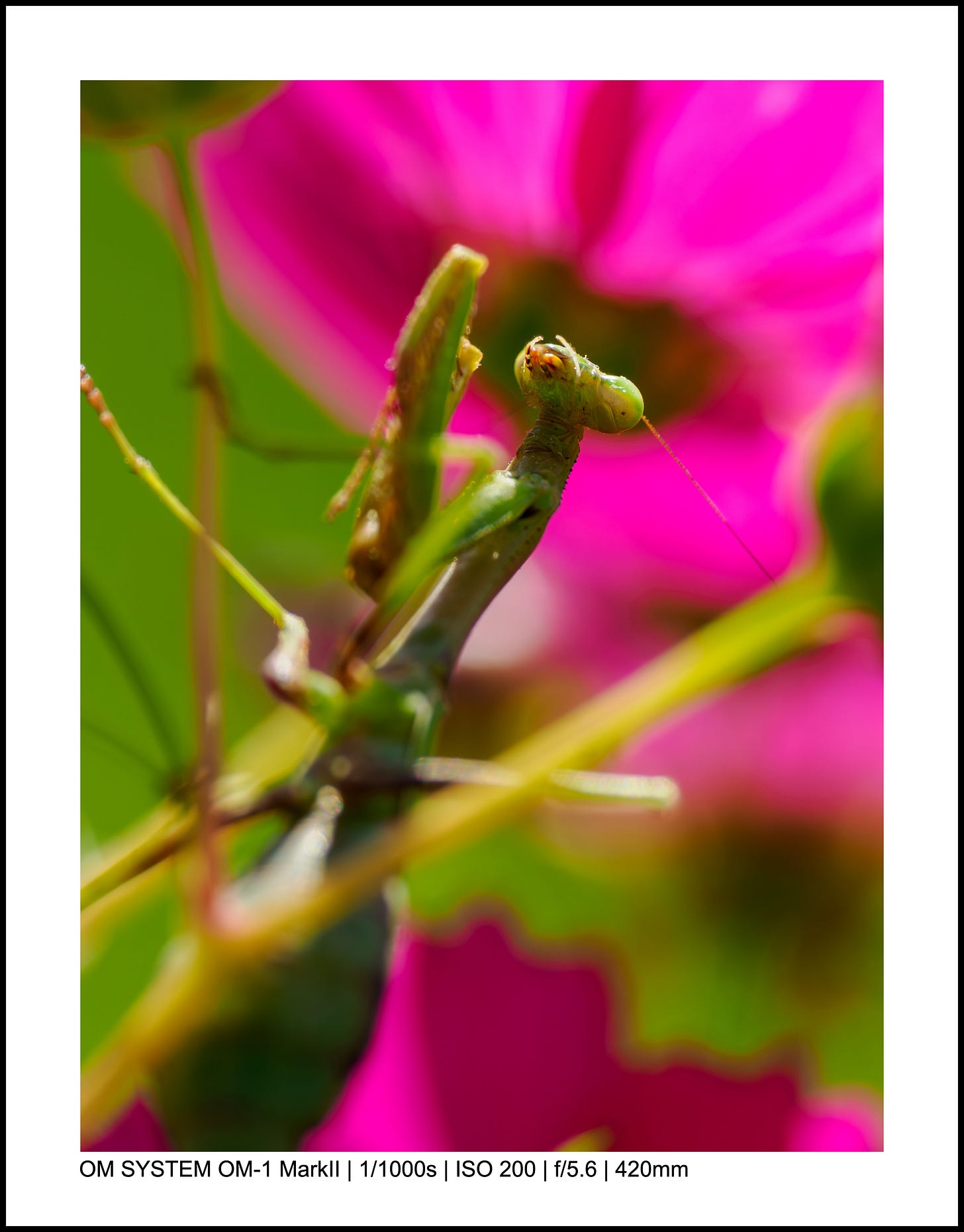
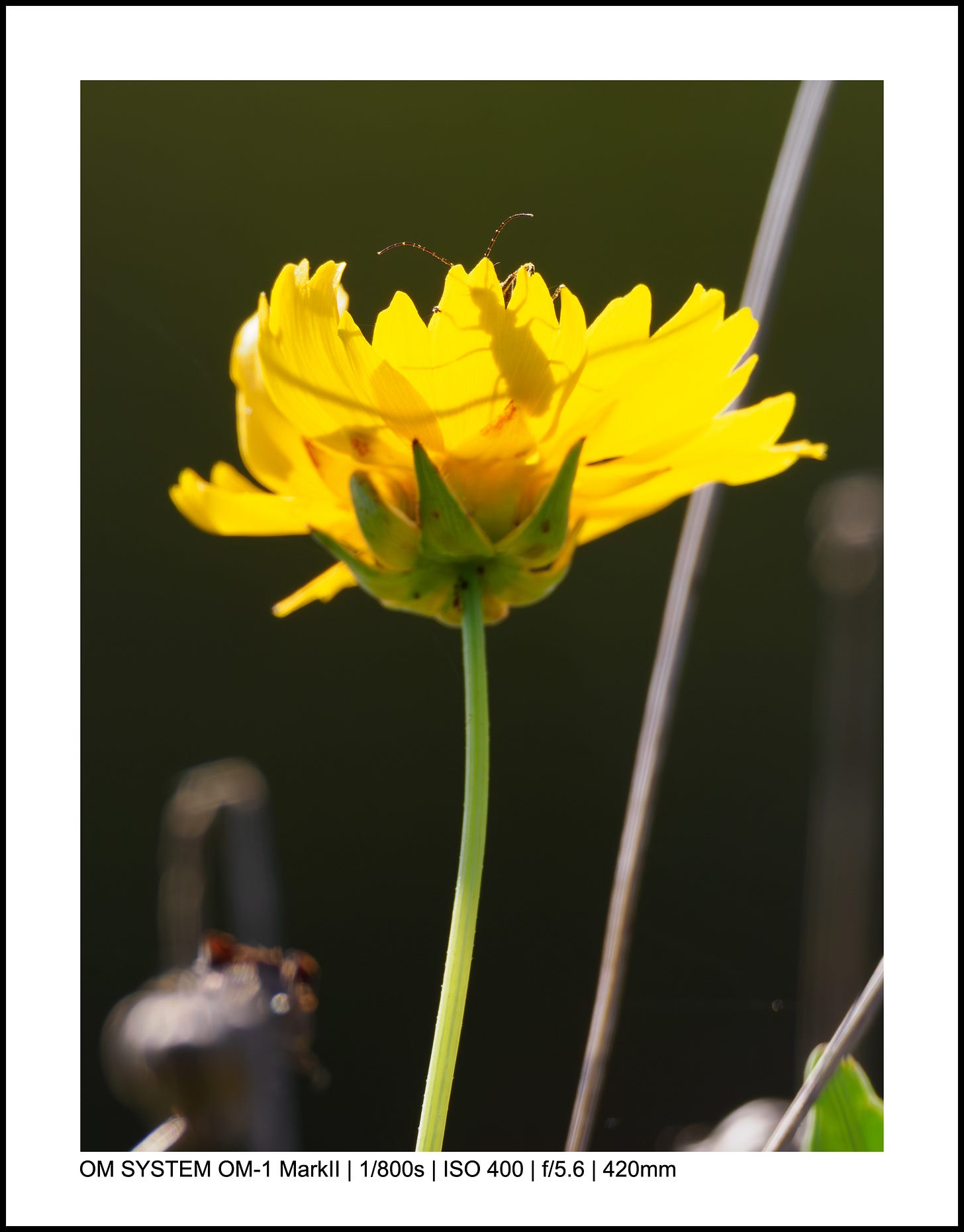
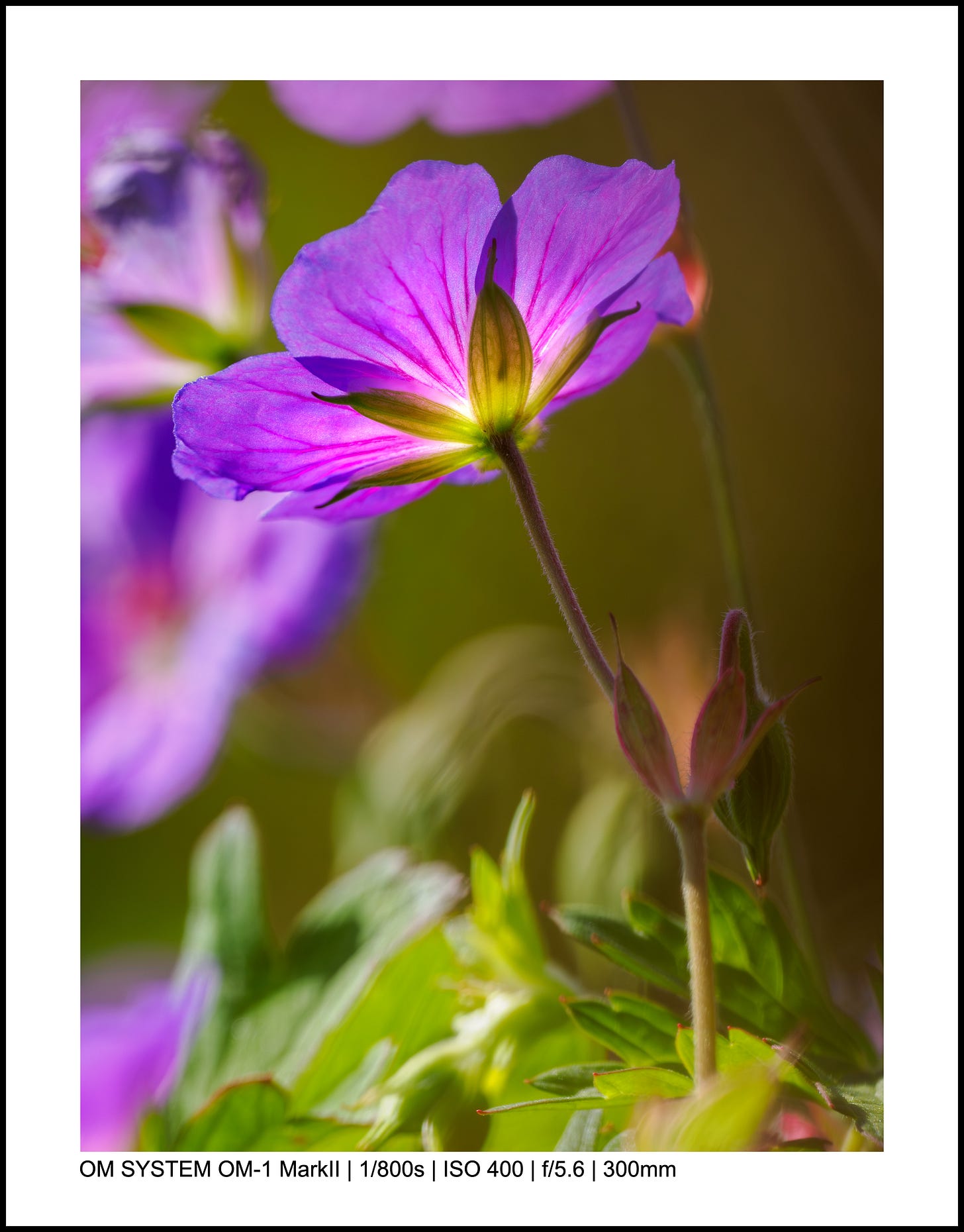
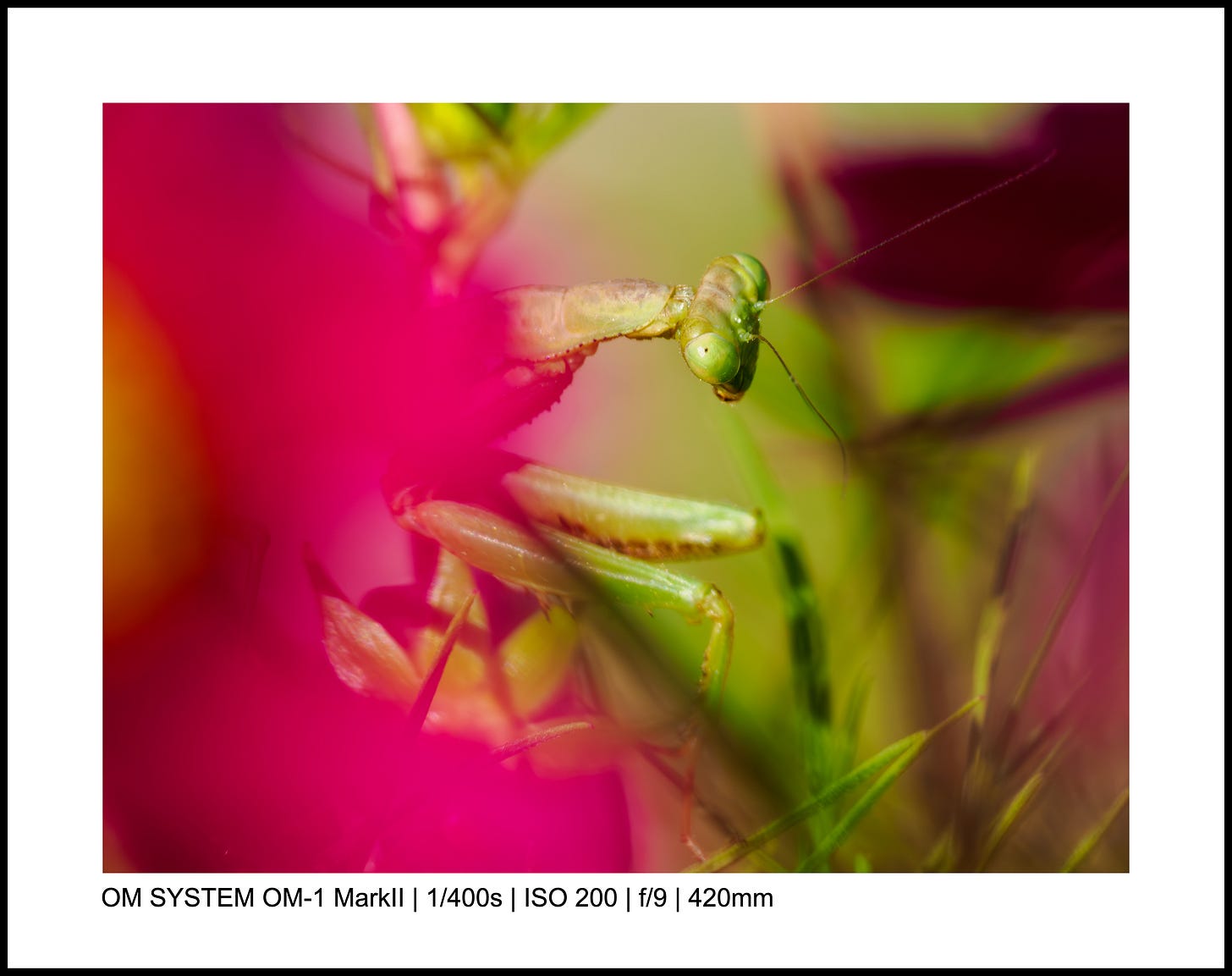
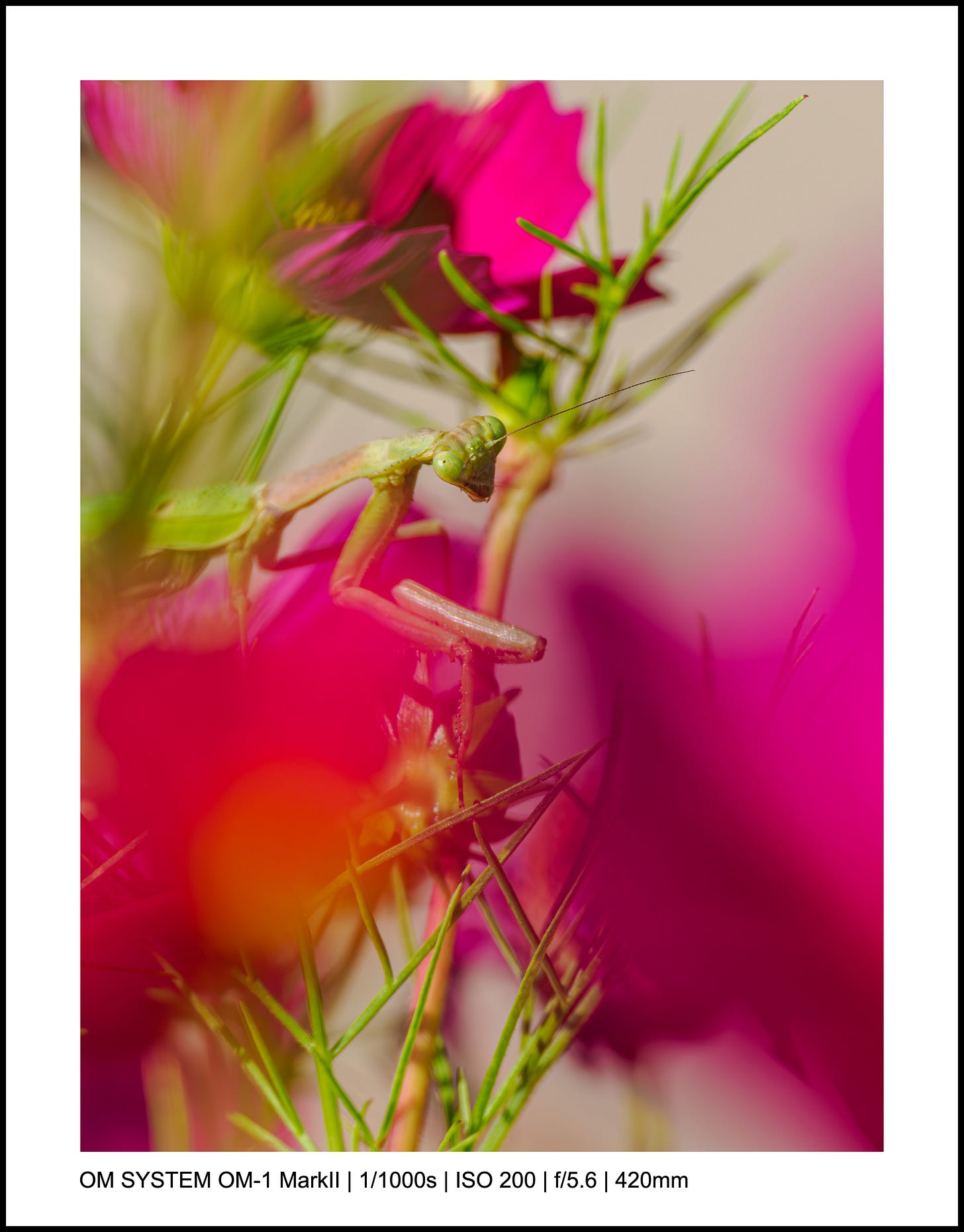
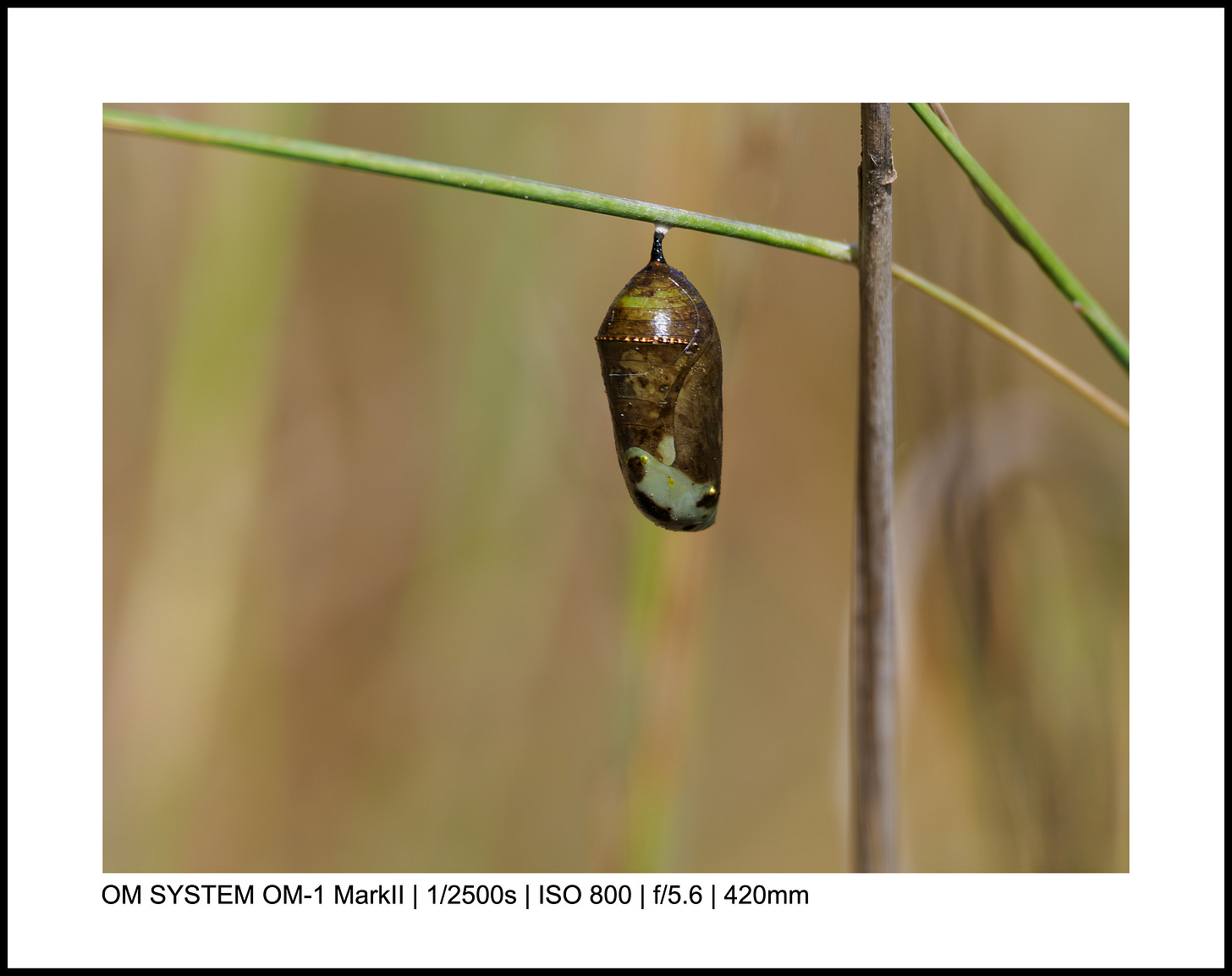
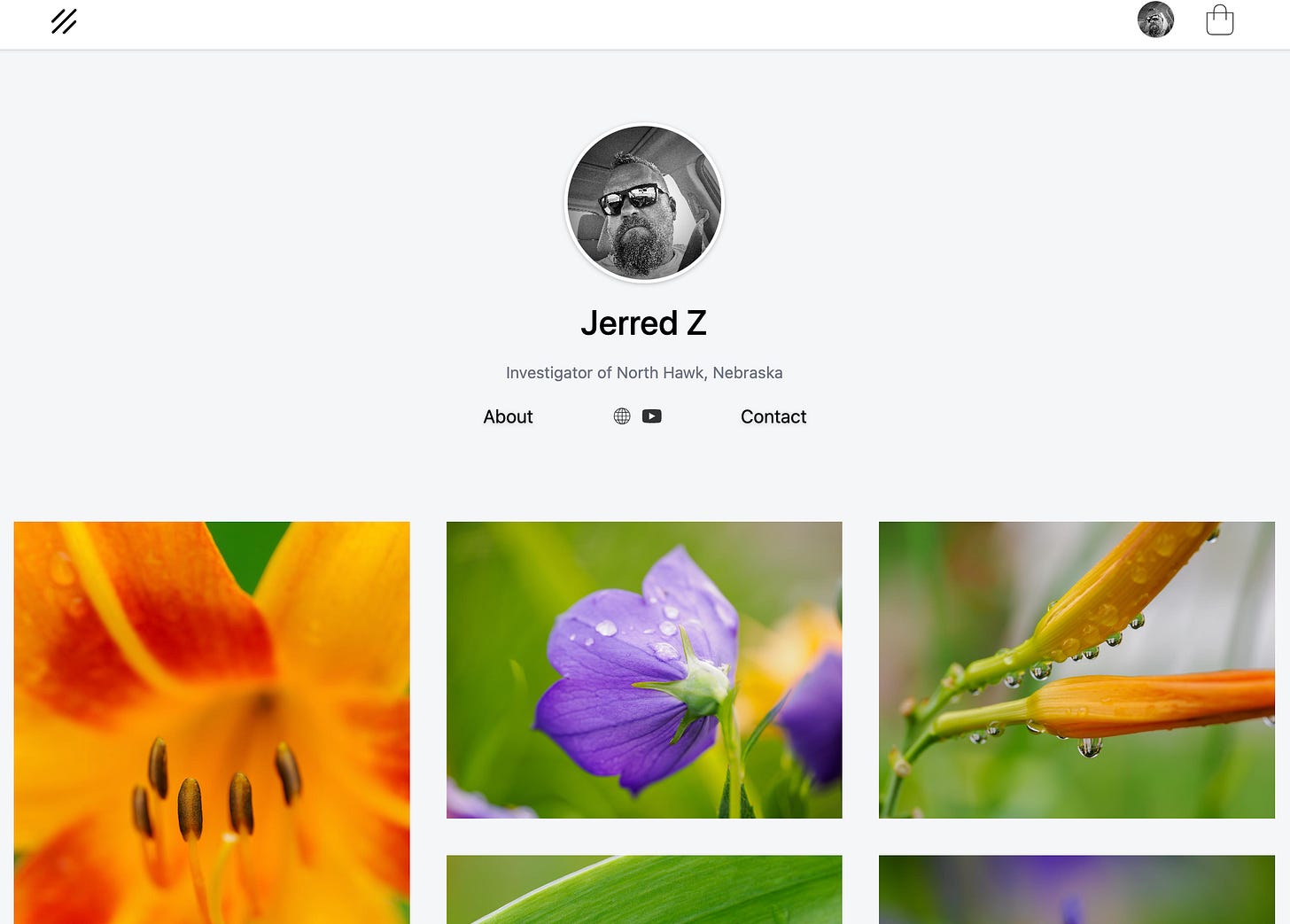
I am not interested in nature photography or macro. Not even a bit. But I read your post with extreme interest nevertheless as a great example of how to share technical insights and experiences in a useful and readable way. All illustrated by splendid and pertinent photos. Well done! 👏
Some really excellent photos here, and incredible sharpness and clarity. My main problem with macro (mostly) is focusing when there is a bit of wind. You mentioned there was some wind when you took that spider photo but yet it's perfectly sharp. Do you have any tips? I find as soon as something moves, the camera can't find the focus, and neither can I with manual focus.